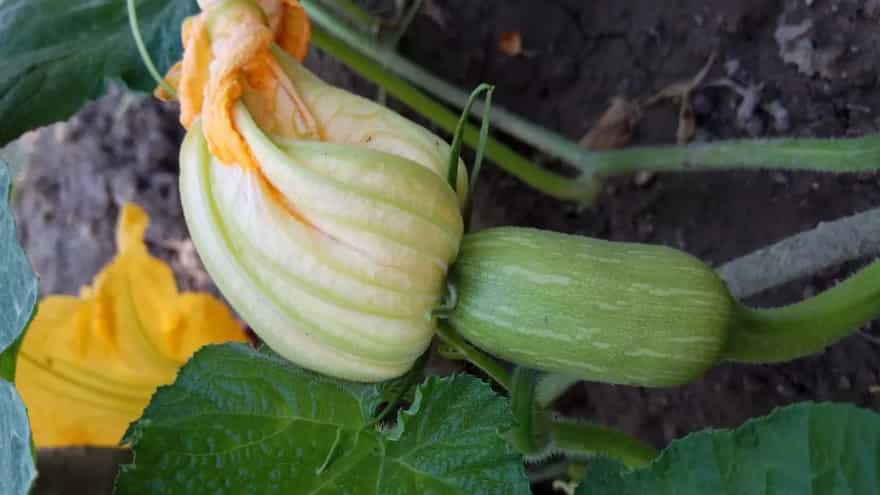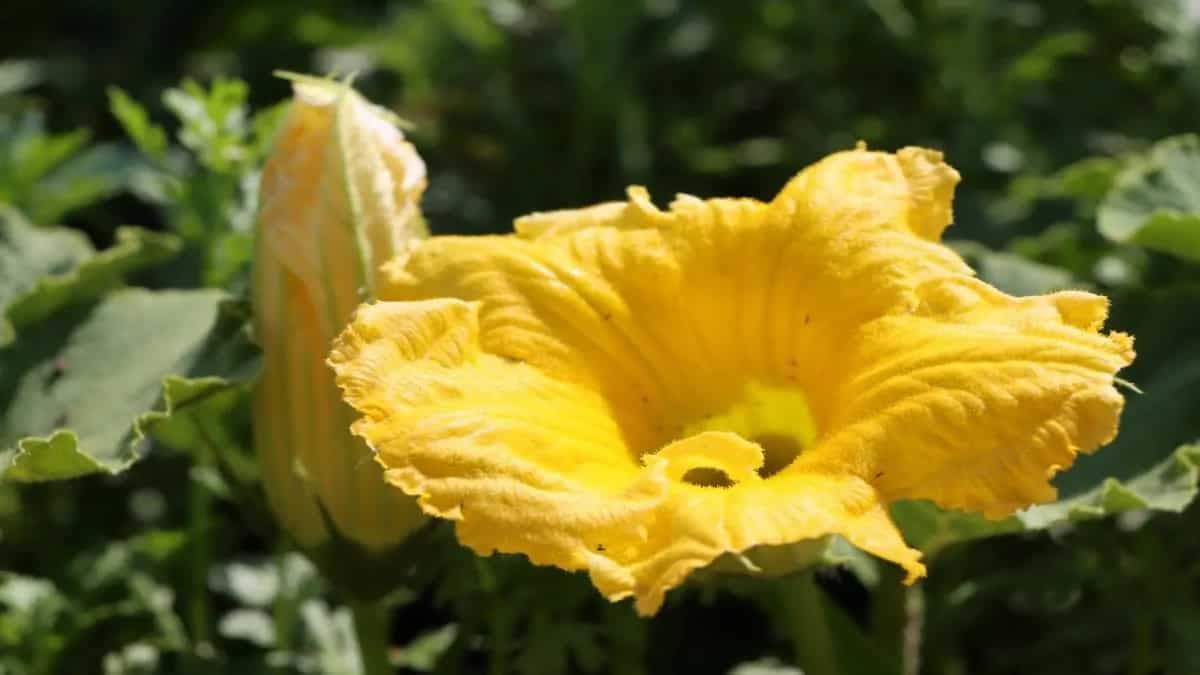Pumpkins are one of the most widely used vegetables in the Indian kitchen. The plant, also called Cucurbita Moschata Duchesne, is a monoecious climbing vine that thrives in hot and humid regions. How many of you know that the pumpkin plant has both male and female blooms? The male flowers emerge earlier. One can identify the female blooms by observing a small fruit swelling at the base close to the stem. The male counterparts are produced directly from the vine. Pumpkin flowers are visually appealing and equally beneficial for health.
The bright yellow-orange pumpkin flowers have a delicious flavour and are a rich source of vitamins, minerals and nutrients. Many Indian regions use them in cooking following different recipes. Here is why one must include them in meals.

Pumpkin female flower
Abundant in vitamins and nutrients
Pumpkin flowers contain 33 grams and provide 9.2 mg of vitamin C, 19 g of vitamin B9, 32 g of vitamin A, 0.23 mg of iron, and 16 mg of phosphorus per serving. They also have 0.025 mg of vitamin B2, 8 mg of magnesium, 0.2 mg of selenium, and 0.228 mg of vitamin B3. Copper, a crucial mineral that your body requires for energy production, is particularly abundant in these flowers. Each meal containing pumpkin blooms has a healthy quantity of folate, a B vitamin essential for DNA synthesis and protein metabolism.
A powerhouse of antioxidants
Antioxidants counteract harmful free radicals and minimise inflammation in our body system. They not only lessen oxidative damage to your cells but also might help avoid chronic disease. Pumpkin flowers are abundant in such antioxidants, particularly anthocyanins, carotene, flavonoids, and phenols. These blooms are rich in carotenoids, which could protect us from various cancers and chronic diseases and improve our cognitive performance.
Immunity booster
The vitamin C in these squash flowers helps strengthen our immune system, shielding us from common coughs and colds. It enhances the body's resistance to infection by accelerating iron absorption. Additionally, it combats viruses. Make it a part of your daily diet, which will aid in meeting your body's need for vitamin C. 9.2 mg of vitamin C or 10.22% of the daily required amount, may be found in pumpkin flowers.

Pumpkin flowers fritters, Image Credit: archanaskitchen
A boon for bones, teeth, and heart
The growth and the upkeep of bones and teeth depend on phosphorus. And pumpkin flowers are rich in this mineral. Calcium and pumpkin flowers work together to build strong bones to withstand daily wear and tear. Additionally, it improves the condition of teeth enamel and gums. Likewise, it supports easing critical issues like osteoporosis, which is characterised by bone loss or mineral density reduction. A recent study regarding phosphorous found its links to heart health. Thus, relishing pumpkin flowers can help you avoid various cardiovascular problems.
An aid for red blood cell production
Several minerals found in pumpkin flowers are necessary to produce red blood cells. Copper is a must for our bodies to make haemoglobin, a particular kind of protein that transports oxygen via red blood cells. These flowers have a good amount of iron, a crucial component of haemoglobin. The body needs it to produce healthy red blood cells. Anaemia, marked by signs including weakness, pale skin, dizziness, and exhaustion, can be brought on by a deficit in either component.
Things to remember while using pumpkin flowers
- These flowers are safe to consume. However, a lot depends on their storage, cleaning and the way of cooking.
- Most recipes often include breading, frying, or stuffing the vegetable with high-calorie items like cheese. So, it is advisable to maintain or reduce the portion sizes, especially for weight watchers.
- Even though pumpkin flowers can be eaten raw, cleaning them before eating is necessary to get rid of any dirt, especially if you're plucking them from your own garden.
- These flowers have a very short shelf life and begin to wilt 24 to 48 hours after being picked. So, use them at the earliest.
Add these flowers into your diet and get a plethora of health benefits.


